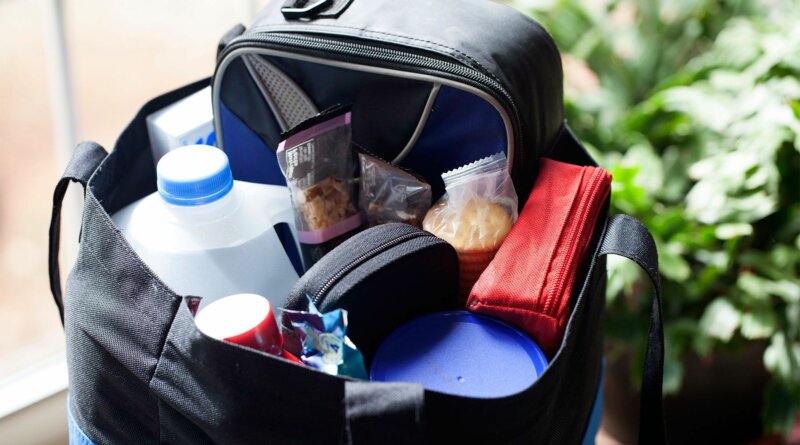From ‘Go Bags’ to Evacuation Routes, Prepare for a Disaster
Jan. 11, 2022 — A couple of days shy of New Year’s Day, residents in the suburbs of Boulder, CO, met a shocking site: a massive wildfire, something practically unheard of in the past. Fire season used to be an actual season, but with climate change, no more. It’s a year-round occurrence.
Ultimately, about 600 homes burned to the ground, fueled by overly dry conditions and winds hitting 100-plus miles an hour. Few were prepared to grab a bag and evacuate in late December, but that’s exactly what thousands had to do.
The same held true a few weeks earlier in Kentucky, when a massive tornado ripped through a 200-mile swath of towns and communities. This came after flooding along the East Coast during the fall and fires along the West Coast in the summer and early fall. As extreme weather events turn from rare to common, no one is safe. But you can prepare for the worst.
Christine McMorrow, a resource management communications officer for the California Department of Forestry and Fire Protection, or CAL Fire, says that step one is knowing what the risks are near you.
“Regardless of where you live, there are year-round disasters and disturbances that can take you from your home,” she says.
At CAL Fire, as the name implies, the focus is on wildfires, but McMorrow says the organization has advice for dealing with many types of risks.
“For instance, if you live near an area that experienced a recent burn, the soil still hasn’t recovered,” she explains. “If there’s a big rain, there’s going to be a potential for flooding and debris flow.”
McMorrow says CAL Fire recommends that everyone be prepared to evacuate, regardless.
“It could be fire, flooding, wind, or snow,” she says. “If you have a plan, you will feel more stable and know that you’ll have all your necessities and key possessions if you must go.”
Make a Plan
Preparing for a potential evacuation should be a family affair, says McMorrow, one that includes all generations.
“If there are elderly people in the home, who might move more slowly, or if you have multiple pets or large pets, take that into account,” she says. “In these cases, pay attention to warnings and alerts and know that you might need to move out earlier than others.”
Your plan should include a meetup location outside the home and hazard area. Also, know escape routes in your area — some may become clogged with congestion as residents try to evacuate all at once. Practice and go over the routes and meetup location with everyone in the house. This should include a plan for handling your pets, too.
“Practice the plan with your family, especially if you have young children,” McMorrow says. “Perform exit drills so that everyone can be ready when it’s needed.”
After that, ensure you have a communication plan to reach out to a friend or relative that lives elsewhere. They can be your point person and share information with other family members and loved ones, avoiding overloading cell and internet services during a disaster.
Pack a To-Go Bag
One of the most important steps you can take in getting ready for evacuation is to have a to-go bag packed and ready. This should include an emergency supply kit for each member of your family — a mixture of nonperishable foods and water, medications and prescriptions, eyeglasses or contact lenses, a first-aid kit, flashlight, changes of clothing, and copies of valuable documents like passports, birth certificates, and the like.
If you have the luxury of extra time, add in family photos and other irreplaceable items, along with chargers for your phones, laptops, and other devices.
In all, you should plan to have enough supplies to carry you through about 3 days, says McMorrow. “That gives you time to regroup, figure out your next steps, and fulfill your needs in the meantime,” she says.
At Ready.gov, a site created by the federal government, officials have created a checklist to follow for preparing a go bag. In addition to the above, it includes:
- Battery-powered or hand crank radio and a NOAA Weather Radio with tone alert
- Extra batteries
- Whistle (to signal for help)
- Dust mask (to help filter contaminated air)
- Plastic sheeting and duct tape (to shelter in place)
- Moist towelettes, garbage bags, and plastic ties (for personal sanitation)
- Wrench or pliers (to turn off utilities)
- Manual can opener (for food)
- Local maps
In the age of COVID-19, the CDC, too, recommends even more items for your survival kit, as appropriate:
- Masks (for everyone ages 2 and above), soap, hand sanitizer, and disinfecting wipes
- Prescription medications. Organize and protect your prescriptions, over-the-counter drugs, and vitamins.
- Nonprescription medications such as pain relievers, anti-diarrhea medication, antacids, or laxatives
- Infant formula, bottles, diapers, wipes, and diaper rash cream
- Pet food and extra water for your pet
- Cash or traveler’s checks
- Important family documents such as copies of insurance policies, identification, and bank account records saved electronically or in a waterproof, portable container
- Sleeping bag or warm blanket for each person
- Complete change of clothing needed for your climate, and sturdy shoes
- Fire extinguisher
- Matches in a waterproof container
- Feminine supplies and personal hygiene items
- Mess kits, paper cups, plates, paper towels, and plastic utensils
- Paper and pencil (pens won’t work in wet weather).
- Books, games, puzzles, or other activities for children
Warning vs. Order
In most natural disasters, emergency management departments will first issue evacuation warnings, before moving on to the crucial evacuation order. You should know in advance how you will operate under either.
“This is really a personal decision,” says McMorrow. “The purpose of a warning is to prep — put your to-go bag in the car, get your pets together, and implement your communication plan.”
But if you live somewhere rural, for instance with only a two-lane road to evacuate, you might want to get on the move when there’s a warning. The same applies to your in-home circumstances — with slower-moving family members or bigger pets, consider getting out sooner rather than later.
To get warnings and orders, you should sign up to receive them from your local, county, and state emergency services departments. The exact source of these alerts will vary, depending on where you live. In California, for instance, the local sheriff’s office will issue the alerts, but in other areas, it might be a county government system.
The alerts themselves might come in the form of “reverse 911” calls. Check in with your local television and radio stations, if you can.
In addition: “We recommend you sign up to follow these offices on social media,” says McMorrow. “We put out accurate information on all our social media accounts.”
To make all of your planning easier, CAL Fire has assembled a list of six “Ps” in case you must evacuate: People and pets; papers, phone numbers, and important documents; prescriptions, vitamins, and eyeglasses; pictures and irreplaceable memorabilia; personal computer hard drives and disks; and “plastic” in the form of credit and ATM cards.
Says McMorrow: “It’s all about being prepared in advance so that you can leave your home quickly if needed. When you’re in a panic state, your brain doesn’t think rationally.”



